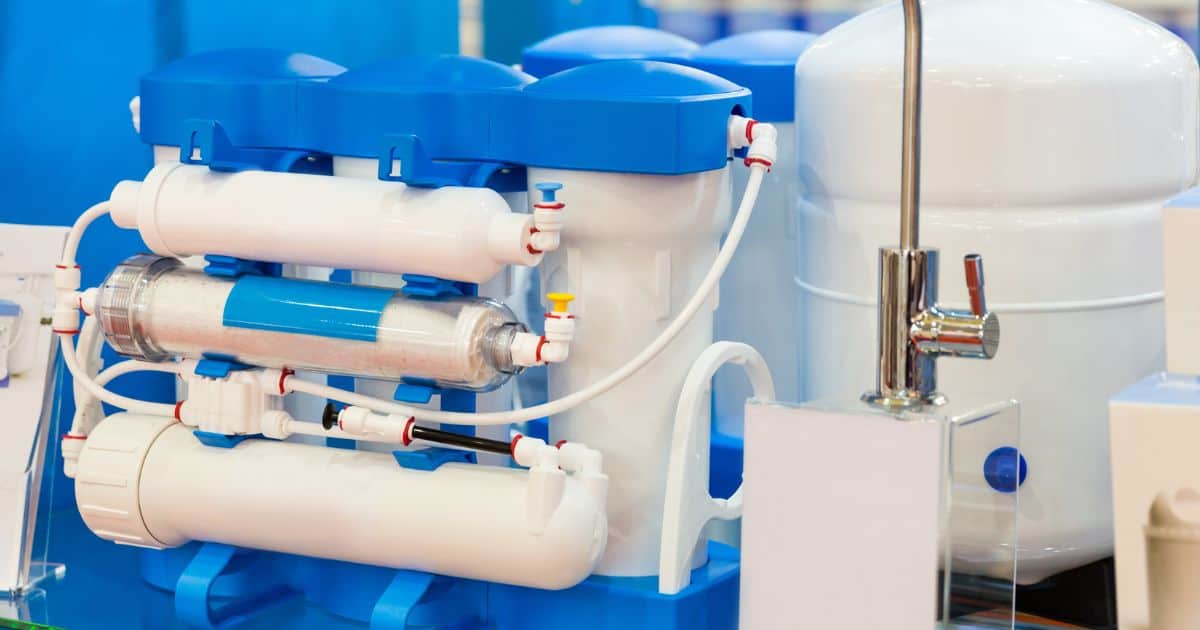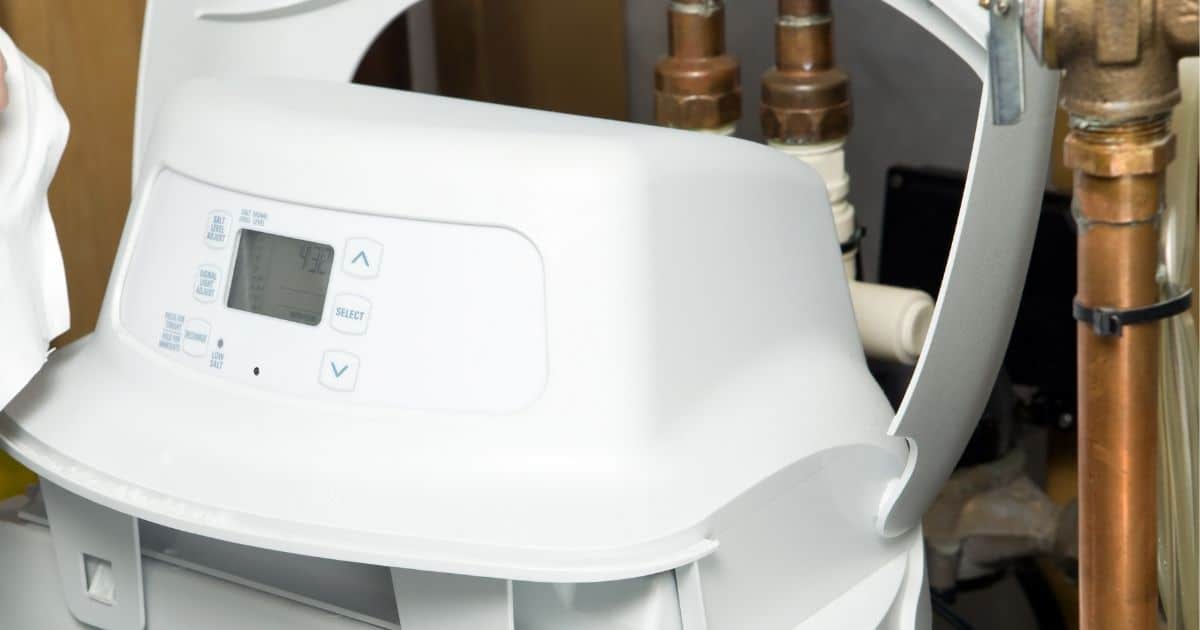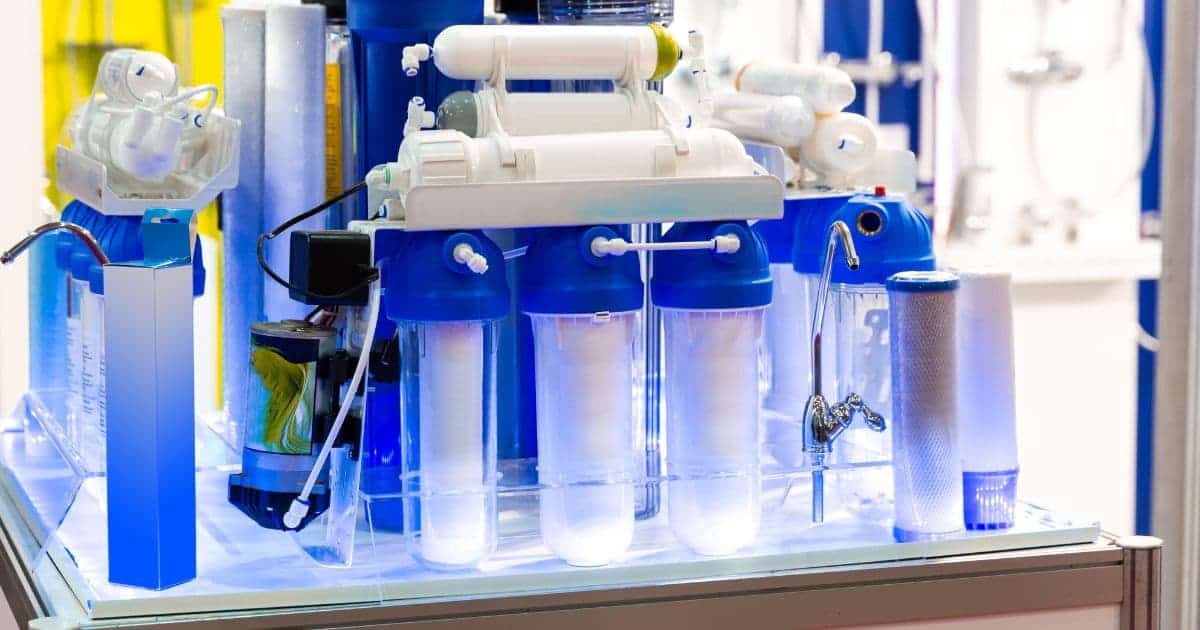We like to share product recommendations with you and hope you like them! Just to make you aware Water Filter Data may collect a small share of sales or other compensation from the links on this page.
Water is a universal solvent, and as a result, it’s prone to contamination. So, do you live in an area supplied with hard or not-so-clean water? Luckily, you’ve stumbled on the right post to solve your problem.
We need water in our daily activities – not only to drink but to wash and shower. And if the water is not fit enough, these simple day-to-day activities become difficult.
But worry no further because this post will discuss two excellent water purification techniques regarding hardness or purity. They include the use of water softeners and reverse osmosis systems.
You may wonder how both systems work or if they solve similar problems. Keep reading as we’ll compare the water softener vs. reverse osmosis systems and how they can provide you with healthy water.
How Do Reverse Osmosis and Water Softener Systems Differ?

Reverse Osmosis (RO) systems are designed to help purify water, while a water softener reduces hardness in water.
In RO, water runs from a region of high concentration to low concentration with pressure through a semipermeable membrane. Larger RO systems use an extra pump for additional pressure.
The semipermeable membrane is designed so that water can run through while other contaminants are filtered. As a result, the water is safer for daily use, especially for drinking. Examples of filtered materials include chlorine, arsenic, fluoride, sediments, and salts.
Interestingly, many water bottling companies use reverse osmosis systems to provide potable water for consumers.
In contrast, a water softener system uses an ion exchange process, and it’s equipped with a resin – and this resin includes positively charged ions. Hardness in water is due to the presence of calcium and magnesium ions.
So as water passes through this system, an ion exchange occurs. As a result, the calcium and magnesium ions are replaced with potassium or sodium, making the water softer and giving it a natural taste.
In most cases, reverse osmosis or water softener systems tend to be installed at a single point of use. For example, you often find them in the kitchen sink rather than the main water source.
Water Softener vs. Reverse Osmosis – Which Is Better?
Generally, the choice of the better option depends on your needs.
Ordinarily, a water softener only removes hardening components like calcium and magnesium. But other impurities remain in the water. As a result, the amount of total dissolved solids in the water is not affected.
On the other hand, a RO system not only filters most of the water impurities but can also soften the water. But, there is a downside to this system – when the RO system filters hard water for an extended period, the semipermeable membrane will require regular replacement.
Reverse osmosis systems are applied mostly in well water supplies with high impurity levels. Also, you may find that the RO system wastes more water than a water softener. This is especially the case if your water has a high hardness level.
If you notice that the water in your home has a strange smell or taste, this could be due to a high contaminant content. It would be best to use a reverse osmosis system in situations like this.
Can I Use a Water Softener and Reverse Osmosis System Together?
Using a water softener alongside an RO system is perfect. Here are the benefits of using both systems together:
Extend Life of Filters in Reverse Osmosis System
The filters used in a reverse osmosis system are designed to remove the water’s dirt, salts, and other contaminants. Nonetheless, they are small and require replacement after a few times.
You can preserve the filter’s lifespan when the water runs through a softener before being filtered with a reverse osmosis system. This, in turn, helps reduce the RO system’s running costs by reducing the filter replacement frequency.
Save You Money
Hard water will still pass through taps if you install only a reverse osmosis system in your home.
Over time, this will build calcium and other contaminants inside the pipes and appliances. As a result, you’ll need to spend money to clean or replace the pipes and taps. But using a water softener with a RO system helps to avoid extra costs.
Why Get A Water Softener System?

Around 85% of homes in America are supplied with hard water.
The issue with hard water is that the minerals found in it, like calcium, iron, and magnesium, can damage pipes and clog your taps. And over time, these clogs can harbor various bacteria which are unhealthy.
Also, hard water can affect the integrity of your dishwashers or washing machines. As a result, it gives you extra repair costs.
In addition, you will find that hard water doesn’t interact as well with detergents, soaps, and shampoos. So, in turn, this means that it takes longer for your clothes or dishes to get clean. Also, this makes you spend more on soaps.
Research has also shown that drinking hard water poses potential health risks, especially heart diseases, due to its calcium content.
But with a water softener system, you can remove these minerals and replace them with sodium ions. As a result, you get water of better quality. However, while the water may not be safe for drinking, it can serve laundry and general cleaning purposes.
Advantages of Using a Water Softener System
- The water is much neater and fresher.
- Any appliances that use water will last longer.
- Your dishes will come out cleaner.
- After washing your hair with softened water, it feels silkier and softer.
- Soft water saves you time and money when cleaning your home.
- These systems require little or no maintenance – you will need to top up the salts and replace the filters every six months.
Why Invest in a Reverse Osmosis Water System?

A reverse osmosis system helps eliminate all unwanted materials from water in your home using a series of filters. A typical RO system is equipped with at least three filters, a prefilter, a semipermeable membrane, and a postfilter.
The water first runs through the prefilter, which captures dust, rust, and dirt. Then, the water is forced through a semipermeable membrane under pressure. The membrane helps to remove any dissolved solids in the water.
After that, the water finally runs through the postfilter to help remove volatile organic compounds. The filter also holds other impurities that can alter the water’s taste and smell.
Advantages of Reverse Osmosis Water Systems
- It provides better-tasting water as reverse osmosis filters can reduce the impurities in water like lead, chlorine, and bacteria that often give the water.
- Reverse osmosis systems are environmentally friendly as you don’t need to buy bottled water because your tap water is safe.
- The water is crystal clear as the RO reduces the amount of salt, calcium ions, minerals, and contaminants in tap water.
- The water you drink is much healthier as the semipermeable membrane limits the number of pathogens in the water supply.
Which Do I Need – Water Softener Or Reverse Osmosis?
If the hard water supply to your home is very high, you may want to consider investing in both water purification systems.
While you may consider a RO system as it works better when removing impurities, it may not be effective if you’re supplied with very hard water. This is because the hard water damages pipes and taps in your home and damages the filters in a RO system. As a result, semipermeable membranes inside the systems will need to be replaced more often.
So if you want to keep costs down, get a water softener before installing a reverse osmosis system. This ensures that the hardness of the water passing through an RO system is significantly reduced.
Conclusion
If you live in an area with a hard water supply, installing a water softener system can prove invaluable. It not only reduces contaminants in the water but it also limits the damage to the water pipes and appliances in your home as it reduces scale build-up.
Also, if you also want to reduce the cost of buying bottled water, then a reverse osmosis system is a must-have. Once installed, the system provides clean water that is odorless, colorless, and tasteless.
We hope you have found this article valuable in differentiating a water softener vs. reverse osmosis system. Leave a quick note below telling us which of these systems you chose and what works best for you!



